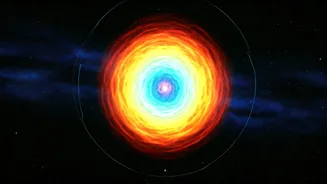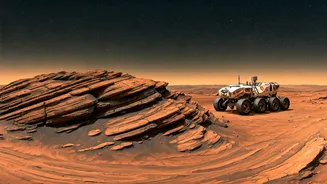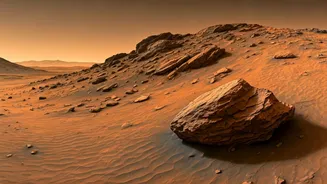Martian Ice's Secrets
NASA's ongoing experiments are illuminating the potential of Martian ice to safeguard evidence of ancient life. Researchers are diligently exploring whether
the ice on Mars could have preserved traces of past organisms. This investigation is crucial as it could offer clues about whether life once existed on the Red Planet. This research provides a crucial context to determine whether the planet was once habitable and may hold the key to understanding the potential for life beyond Earth. The study of Martian ice could hold vital clues in the search for extraterrestrial life and help determine whether Mars could have supported past life forms.
Early Universe Mapped
Scientists have achieved a groundbreaking feat by generating the most comprehensive radio map to date of the early universe utilizing the Murchison Widefield Array (MWA). This advanced technology allows astronomers to peer into the nascent stages of cosmic history. This extensive mapping gives scientists an unparalleled view of the universe shortly after the Big Bang. The research team's achievement marks a major leap in astrophysics, helping to illuminate the origin and evolution of the universe in ways previously impossible. The data gathered provides crucial insights into the formation of early galaxies and the distribution of matter across the cosmos.
Water in Asteroids
Data from the Ryugu asteroid samples has uncovered evidence of ancient water flow on the asteroid, spanning a billion years. These findings reveal significant details about the movement of water within the asteroid. The examination of these samples offers valuable insights into the origin and evolution of water in the solar system. This discovery contributes significantly to understanding how water was delivered to the inner solar system, and how life on Earth got its initial water. Scientists are gaining a richer understanding of planetary formation and the distribution of crucial resources like water. This exploration could rewrite the understanding of how water contributes to the habitability of planetary bodies.
Atmospheric CO2 Increase
A significant increase in atmospheric carbon dioxide (CO2) levels has been reported, with a record-breaking yearly jump to 424 parts per million (PPM). This sharp rise of carbon dioxide underlines the ongoing challenges presented by climate change. This rise in CO2 levels serves as a stark reminder of the effects of human activities and the urgent need for action. The concentration of CO2 has never been this high in our recent history, which emphasizes the need for significant steps to curb emissions and mitigate the effects of global warming. The implications of this elevated level span across the entire climate system and underscore the urgency for global coordinated efforts to reduce emissions and shift to sustainable practices.
Ancient Water Around Stars
Astronomers have identified heavy water within a planet-forming disk around a young star. This finding is significant because it provides crucial insights into the availability of water in the environments where planets form. This discovery is a significant indicator that water, a key element for the emergence of life, is present in the environments that support planet formation. Studying these young stars enables a better comprehension of how planetary systems acquire water and the conditions that might facilitate the development of life beyond Earth. It enhances the comprehension of the conditions surrounding the formation of new planetary systems.
Proto Earth's Traces
MIT has discovered evidence of a lost ‘proto-Earth’ deep within the Earth's mantle. This groundbreaking discovery offers deeper insight into our planet's early composition and formation stages. This extraordinary finding offers new perspective into how the Earth evolved. This detection opens possibilities for understanding the chemical processes that occurred during our planet's genesis. This research sheds light on the origins of the Earth and the dynamics that shaped our planet over billions of years. This discovery reshapes existing concepts about the composition of Earth and its early conditions.











